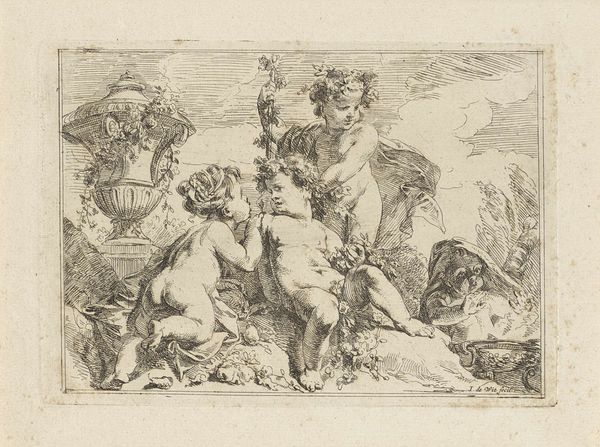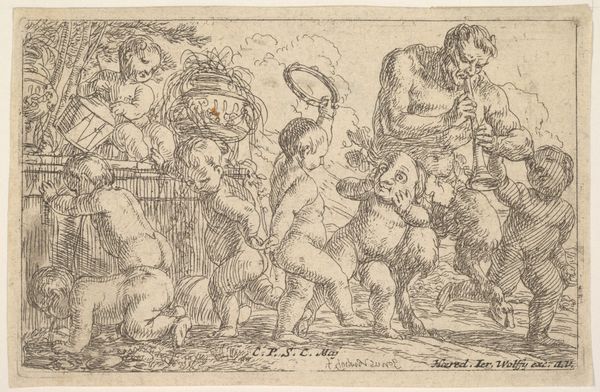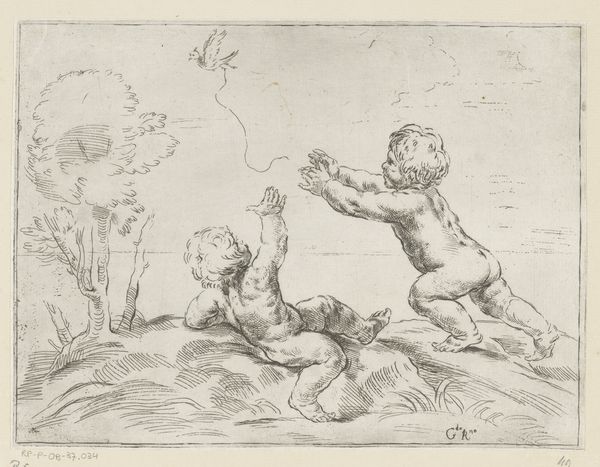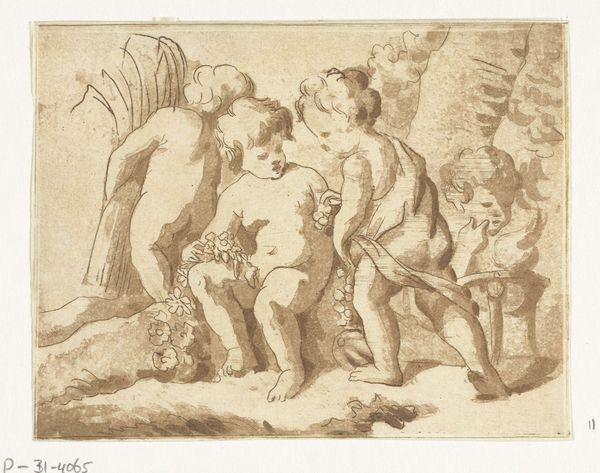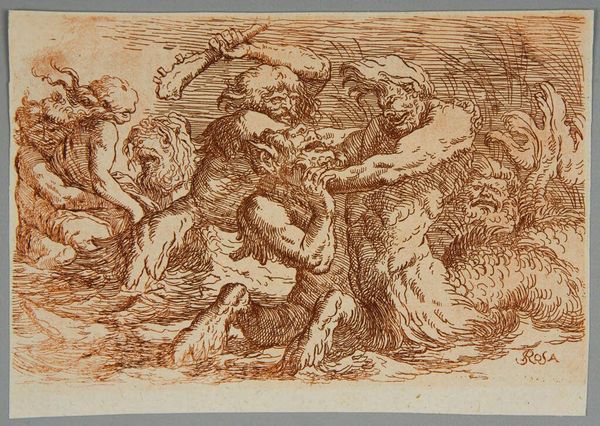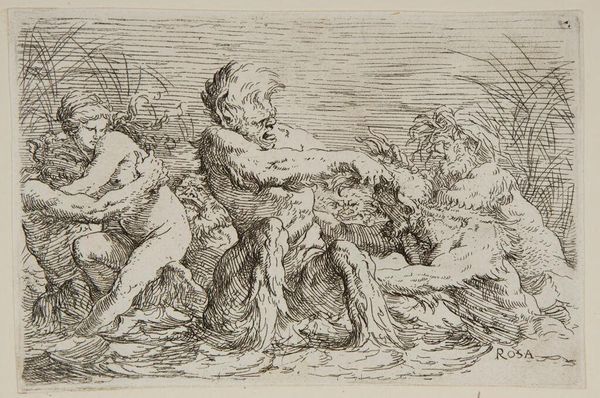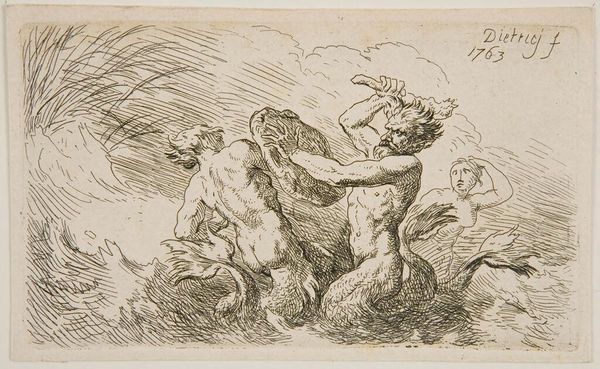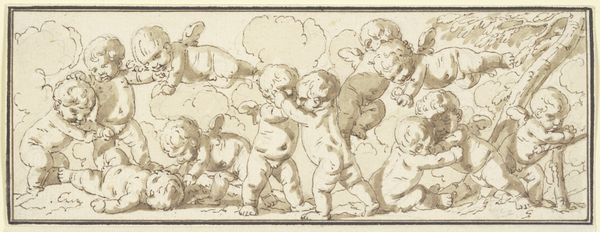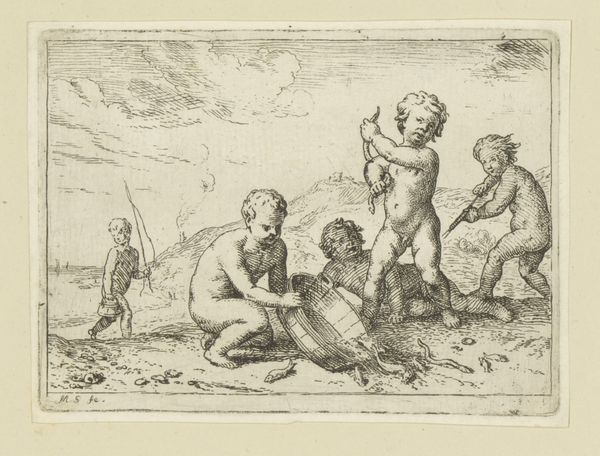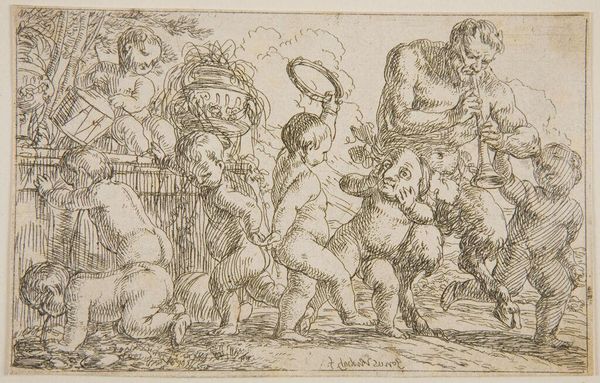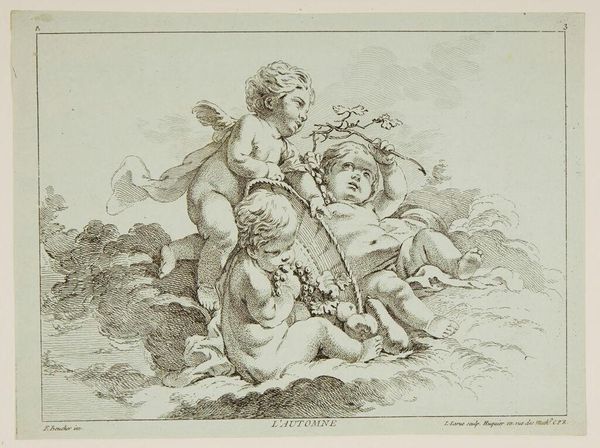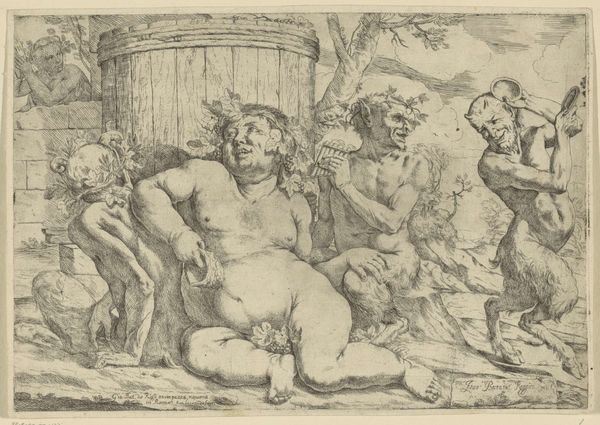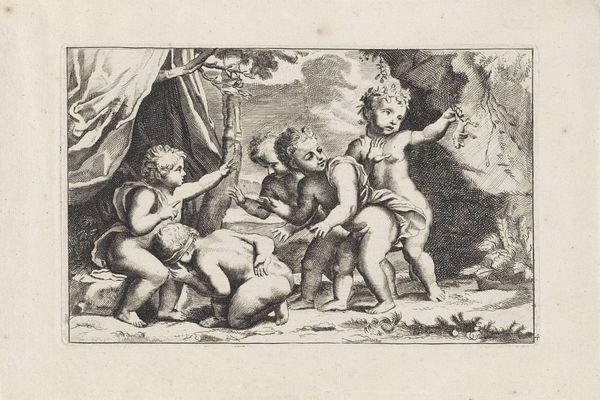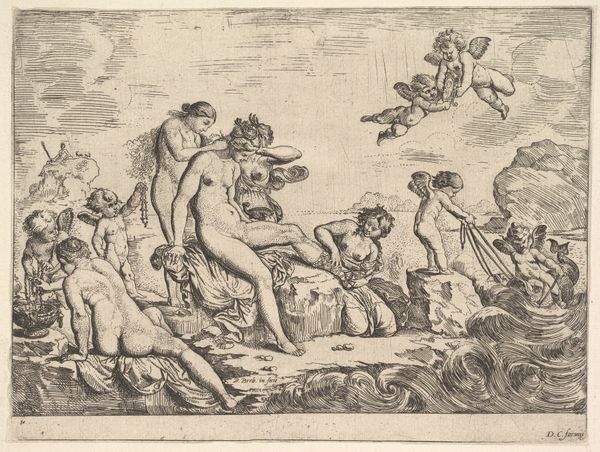
drawing, print, etching, ink
#
drawing
#
ink drawing
#
narrative-art
#
baroque
# print
#
etching
#
figuration
#
ink
Dimensions: height 151 mm, width 240 mm
Copyright: Rijks Museum: Open Domain
Curator: Before us is "Fries met naakte kinderen," which translates to "Frieze with Naked Children," an etching attributed to Pieter van Avont, dating roughly between 1622 and 1652. It's currently held in the collection of the Rijksmuseum. Editor: My immediate reaction is to its whimsical, almost chaotic energy. There's so much movement packed into this frieze, a band of frolicking cherubs creating a dynamic horizontal flow across the composition. The line work feels light, quick, giving a sense of immediacy. Curator: The motif of putti, or cherubic figures, was popular during the Baroque period. They often symbolized love, innocence, and divine presence. Van Avont seems to draw upon this symbolic language, but injects a playful, almost mischievous tone. Editor: Absolutely. Observe how he uses a subtle variation in line weight and density to create depth and highlight key figures. Note, especially, the detail etched into the central figure of the goat to highlight the rich tonality on the fur, providing some sense of materiality to this scene of seemingly boundless children's imagination. Curator: Goats often had associations with both pastoral innocence and more lascivious qualities. Seeing the children interact with such an animal—one playing a horn while astride it, others carrying it—creates a tension between purity and perhaps something a bit more primal. The etching echoes earlier depictions of bacchic revelry. Editor: The diagonal hatching creates not just light but a texture too, a background energy. The baroque aesthetic revels in drama and movement, but how those themes resonate depend so much on composition to achieve that kind of aesthetic. What strikes me here is a lightness within constraint: within the rigid frieze is pure exuberance. Curator: It’s a wonderful piece to contemplate the recurring visual narratives throughout history, especially considering the work in its full cultural context in Northern Europe in the early modern period. What images endure in collective memory, and how are they reshaped over time? Editor: Precisely, a lovely exploration. The balance in line-work generates motion; the figures have potential despite their placement along the picture plane. The frieze operates like a window and a storybook, generating endless possible narratives beyond what is literally etched on the page.
Comments
No comments
Be the first to comment and join the conversation on the ultimate creative platform.
